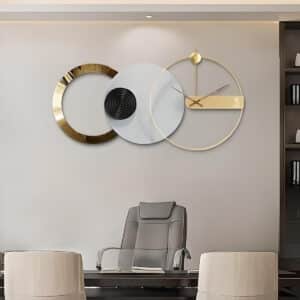The History and Evolution of Metal Wall Art: From Ancient Techniques to Modern Innovations Leave a comment
Metal wall art has a rich history, reflecting centuries of artistic expression and technological advancement. From ancient civilizations to contemporary design, metal wall art has evolved significantly, combining historical techniques with modern innovations. This blog explores the journey of metal wall art, from its early origins to the latest trends and innovations.
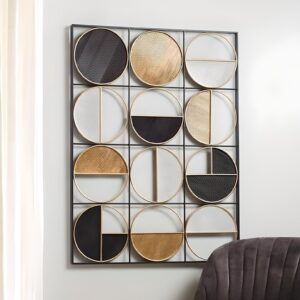
1. Ancient Techniques: The Roots of Metal Art
Metal wall art has been a form of artistic expression since ancient times, with techniques that laid the foundation for modern practices.
Key Ancient Techniques:
- Repoussé and Chasing: These early methods involved shaping metal from the back to create a raised design (repoussé) and refining the design from the front (chasing). Used in ancient Mesopotamia, Egypt, and Greece, these techniques produced intricate metalwork.
- Enameling: Enameling, used by the ancient Egyptians and Greeks, involved fusing glass or colored minerals onto metal surfaces to create vibrant designs.
- Bronze Casting: Ancient China and India utilized lost-wax casting to produce detailed bronze art, including ceremonial and decorative pieces.
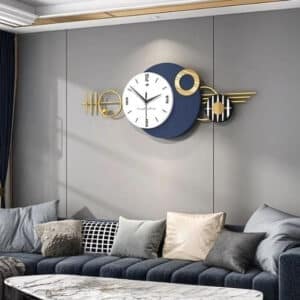
2. Medieval and Renaissance Periods: Artistic Flourishing
The Medieval and Renaissance periods marked significant advancements in metal wall art, with artists experimenting with new techniques and styles.
Medieval Innovations:
- Gothic Ironwork: During the Gothic period, ironwork became prominent in decorative elements like grilles, gates, and wall-mounted pieces, showcasing intricate designs and craftsmanship.
- Decorative Shields and Armor: The Medieval period also saw the creation of ornamental shields and armor, adorned with heraldic symbols and intricate engravings.
Renaissance Advances:
- Detailed Relief Work: The Renaissance brought advancements in relief work, including detailed scenes and figures in metal using techniques like etching and engraving.
- Brass and Copper Art: Artists began using brass and copper for their ability to be polished to a high sheen and for their versatility in artistic creation.
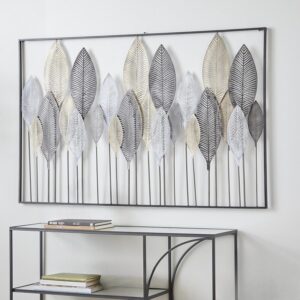
3. Industrial Revolution: Mass Production and Modernization
The Industrial Revolution introduced new technologies and manufacturing methods, revolutionizing the production and design of metal wall art.
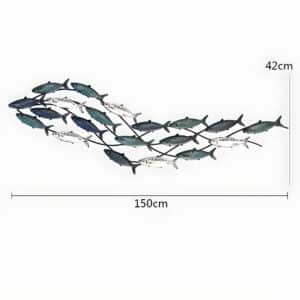
Industrial Innovations:
- Machine Stamping and Cutting: Machine stamping and cutting allowed for intricate patterns and designs to be produced efficiently and consistently.
- Art Deco Movement: The Art Deco movement of the early 20th century introduced geometric shapes, bold colors, and streamlined forms, influencing metal wall art with its distinctive style.
- Modern Metalworking Techniques: Techniques such as welding and laser cutting enabled more complex and precise designs, expanding artistic possibilities.
4. Contemporary Trends: Innovation and Personalization
Modern metal wall art reflects contemporary trends and innovations, offering a wide range of styles and customization options.
Current Trends:
- 3D Metal Art: Advances at a metal wall art 3D warehouse allow artists to create three-dimensional effects, adding depth and dimension to their pieces.
- Integration of Technology: The incorporation of technology, such as metal wall art with LED lights, adds dynamic and illuminated elements to artwork, enhancing its visual impact.
- Custom and Personalized Art: With digital design and manufacturing advancements, custom and personalized metal wall art has become increasingly popular, catering to individual tastes and preferences.
Local and Global Influence:
- Regional Styles: Metal wall art in Chennai and metal wall art Bangalore feature unique local styles and influences, offering a diverse range of options for enthusiasts.
- Global Market: The global market for metal wall art includes a wide variety of designs, from traditional craftsmanship to modern innovations, available from various metal wall art manufacturers.
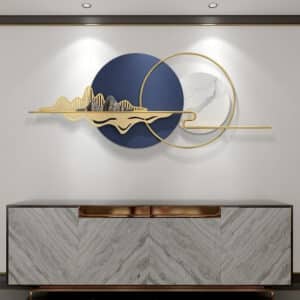
5. The Future of Metal Wall Art: Looking Ahead
The future of metal wall art holds exciting possibilities, with ongoing innovations and trends shaping its evolution.
Future Possibilities:
- Sustainable Materials: As environmental awareness grows, there is a trend toward using sustainable and eco-friendly materials in metal art production.
- Interactive Art: Future trends may include interactive elements, such as motion sensors and digital interfaces, adding new dimensions to metal wall art.
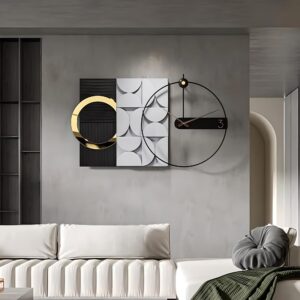
Conclusion
The history and evolution of metal wall art reflect a rich tapestry of artistic expression and technological advancement. From ancient repoussé techniques to contemporary 3D designs and LED integrations, metal wall art continues to captivate and inspire. Whether you’re interested in historical craftsmanship or modern innovations, metal wall art offers a diverse range of styles and possibilities.
For those exploring options, metal wall art in Chennai and metal wall art Bangalore provide a variety of local and unique designs. Whether you seek metal wall art for living rooms or are interested in pieces from a metal wall art 3D warehouse, there’s something to suit every taste and space in the ever-evolving world of metal wall art.
